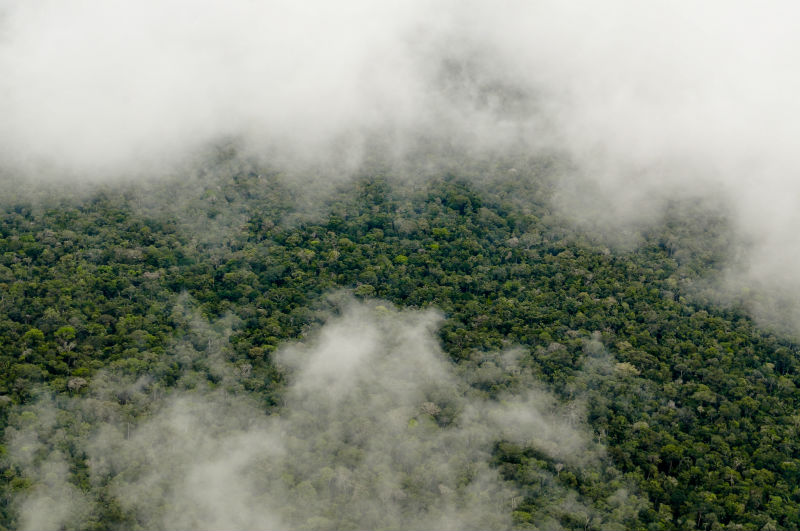 Aerial view of the Amazon rainforest, near Manaus, the capital of the Brazilian state of Amazonas
Aerial view of the Amazon rainforest, near Manaus, the capital of the Brazilian state of Amazonas
Ultrafine aerosol particles found in polluted urban air can contribute to more intense storms in the Amazon rainforest, with potential knock-on effects for weather and climate patterns in the region and beyond, researchers have warned.
Particles smaller than 50 nanometres in diameter have a substantial influence on cloud formation in the Amazon. In turn, the rainforest has a strong influence on climate regulation worldwide, and aerosol effects observed in this region could also trigger climate shifts globally, according to a study published in Science.
Although it has long been known that aerosols could play an important role in shaping regional weather patterns, ultrafine particles were thought to be too small to affect the formation of clouds. This has now been overturned by the new study, at least in the specific circumstances of the Amazon.
“These tiny particles were thought to be too small to aid droplet formation”, says meteorologist Luiz Augusto Machado, from the Brazilian Institute for Space Research’s Center for Weather Forecasting and Climate Studies, and one of the study’s authors. “Now we verified that their presence is one reason why some storms become so strong and produce so much rain in Amazon region.”
Pérola de Castro Vasconcellos, a chemist at the University of Sao Paulo’s Laboratory of Atmospheric Chemistry Studies, tells SciDev.Net. that “this [study] changes the way clouds are to be represented in models used for weather forecasting, as well as the way researchers understand the workings of tropical rain.”
The research team analysed the influence of ultrafine particles on cloud cycles in the rainforest during the 2014 rainy season, when there were no forest fires and the only source of pollution was Manaus, the largest city in the Amazon.
The city’s two million inhabitants and 500,000 vehicles add to the pollution released by thermoelectric plants to produce a plume that moves into surrounding areas through wind patterns.
The researchers used a ground station to measure the concentration of aerosols in the atmosphere and the air’s vertical motion, in order to calculate the size of cloud droplets, the amount of rainfall and the speed with which vapour travels from the earth's surface to the clouds.
The weather station was based in Manacapuru city — located 80 kilometres from Manaus — which receives both the pollution carried by the wind from Manaus and the clean air from the forest.
This setting allowed the scientists to examine how the pollution impacts atmospheric processes in a largely pre-industrial environment, and to identify the particles’ effect on the cloud cycle.
Their analysis shows that condensation around tiny particles significantly increased cloud formation and warmed the surrounding air, intensifying the so-called deep convective cloud systems that are responsible for causing thunderstorms in the Amazonian tropics.
“These tiny particles act [by] forming cloud droplets after all the larger particles in a warm and humid environment have already been used to form droplets,” says Machado in an interview with SciDev.Net.
He explains that the low concentration of large particles contributes to high levels of water vapour and an increase of relative humidity, creating the conditions for ultrafine particles to transform into cloud droplets.
Though small, these particles are numerous, so they can form many small droplets on which the excess water vapour condenses, which makes the updrafts much more powerful: more warm air is pulled into the clouds, and this means more lightning and rain, Machado explains.
Atmospheric scientist Maria Assunção da Silva Dias, from the University of São Paulo’s Institute of Astronomy, Geophysics and Atmospheric Sciences, says “the results show that tiny particles are important to explain the formation of intense clouds affected by the pollution of Manaus”.
The study is part of by GoAmazon, a project that brings together 100 researchers from Brazil, United States and Germany.
The next step for the researchers is to verify the consequences of this dynamic for other Brazilian regions and for other parts of the world.
This article was originally published by SciDevNet under a CC-BY licence

Rate and Review
Rate this article
Review this article
Log into OpenLearn to leave reviews and join in the conversation.
Article reviews